Fluoride is a natural mineral found in the Earth’s crust and widely distributed in nature. It is present in some foods and water, and plays a crucial role in dental health. This article will delve into the definition and types of fluoride, its natural sources, its role in dental health, and why it is added to our water supply.

Definition and Types of Fluoride
Fluoride is a compound of fluorine, an element that is commonly found in the Earth’s crust. It exists in several forms, including calcium fluoride, sodium fluoride, and stannous fluoride. These types of fluoride are used in various applications, such as in dental products and water fluoridation.
Calcium fluoride is naturally found in many types of rocks and soil, while sodium fluoride and stannous fluoride are often synthesized for use in dental products and public water supplies. Each type of fluoride has a unique role, but all contribute to dental health.
Natural Sources of Fluoride
Fluoride is naturally present in the environment and can be found in varying amounts in fresh and saltwater sources, soil, rocks, and some foods. For instance, tea leaves, seafood, and certain fruits and vegetables can contain fluoride. The concentration of fluoride in these natural sources can vary greatly, depending on the fluoride content of the soil and water in the area.
The Role of Fluoride in Dental Health
Fluoride plays a pivotal role in dental health. It helps to prevent tooth decay by making the tooth more resistant to acid attacks from plaque bacteria and sugars in the mouth. It also reverses early decay. In children under 6 years of age, fluoride becomes incorporated into the development of permanent teeth, making it difficult for acids to demineralize the teeth.
Dental products like toothpaste and mouthwash often contain fluoride for this reason. Regular use of these products can help to maintain good oral health and prevent dental issues such as cavities and tooth decay.
Why is Fluoride Added to Our Water?
Water fluoridation is a common practice in many countries, including the United States, Canada, and Australia. It involves adjusting the fluoride concentration in the public water supply to a level that is optimal for preventing tooth decay.
The practice of water fluoridation began in the mid-20th century, after scientists observed that people living in areas with higher levels of fluoride in their water had fewer cavities. This led to the conclusion that fluoride can help to prevent tooth decay, and thus, the practice of adding fluoride to public water supplies was born.
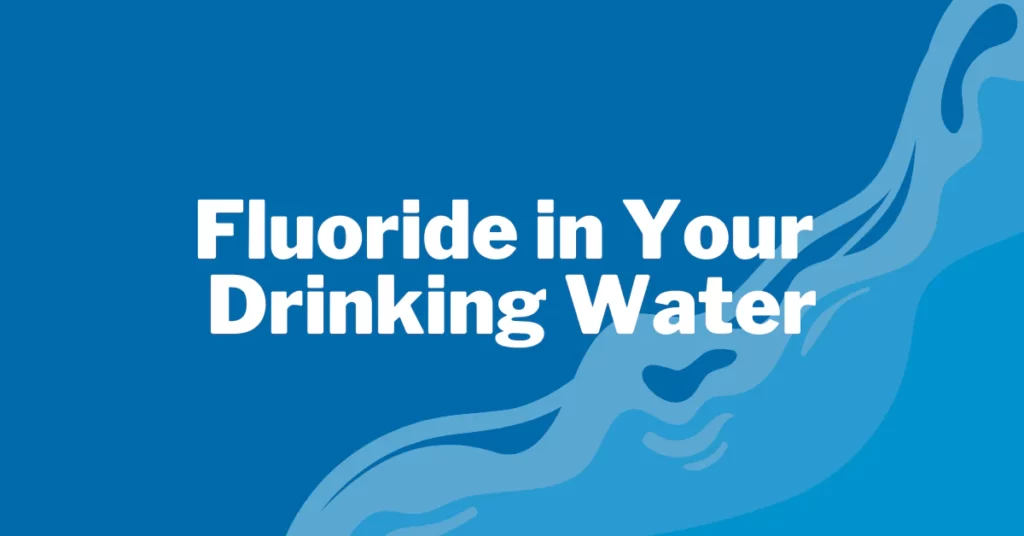
Water fluoridation is considered one of the most cost-effective ways to deliver fluoride to people of all ages, backgrounds, and income levels. It has been endorsed by numerous health and professional organizations, including the World Health Organization and the American Dental Association.
In conclusion, fluoride is a naturally occurring mineral that plays a crucial role in dental health. It is found in various natural sources and is added to dental products and public water supplies to help prevent tooth decay. Regular consumption and use of fluoride can contribute to maintaining good oral health.
Sources and Uses of Different Types of Fluoride
| Type of Fluoride | Source | Use |
|---|---|---|
| Calcium Fluoride | Rocks and soil | Naturally occurring |
| Sodium Fluoride | Synthesized | Dental products, water fluoridation |
| Stannous Fluoride | Synthesized | Dental products, water fluoridation |
References:
- “Water Fluoridation Basics.” Centers for Disease Control and Prevention.
- “Fluoride in Drinking-water.” World Health Organization.
Water Fluoridation: A Historical Perspective and Its Global Impact
Water fluoridation, the controlled addition of fluoride to public water supplies, is a widely practiced public health measure aimed at reducing tooth decay. This article will explore the history of water fluoridation, its benefits, the countries that practice it, and the health implications of fluoride in water.
History of Water Fluoridation
The history of water fluoridation dates back to the early 20th century when dental scientists began to investigate the reasons behind the lower rates of tooth decay observed in some communities. In the 1930s, researchers discovered a correlation between naturally occurring fluoride in drinking water and reduced prevalence of dental caries. This led to the first public water fluoridation project in Grand Rapids, Michigan, in 1945.
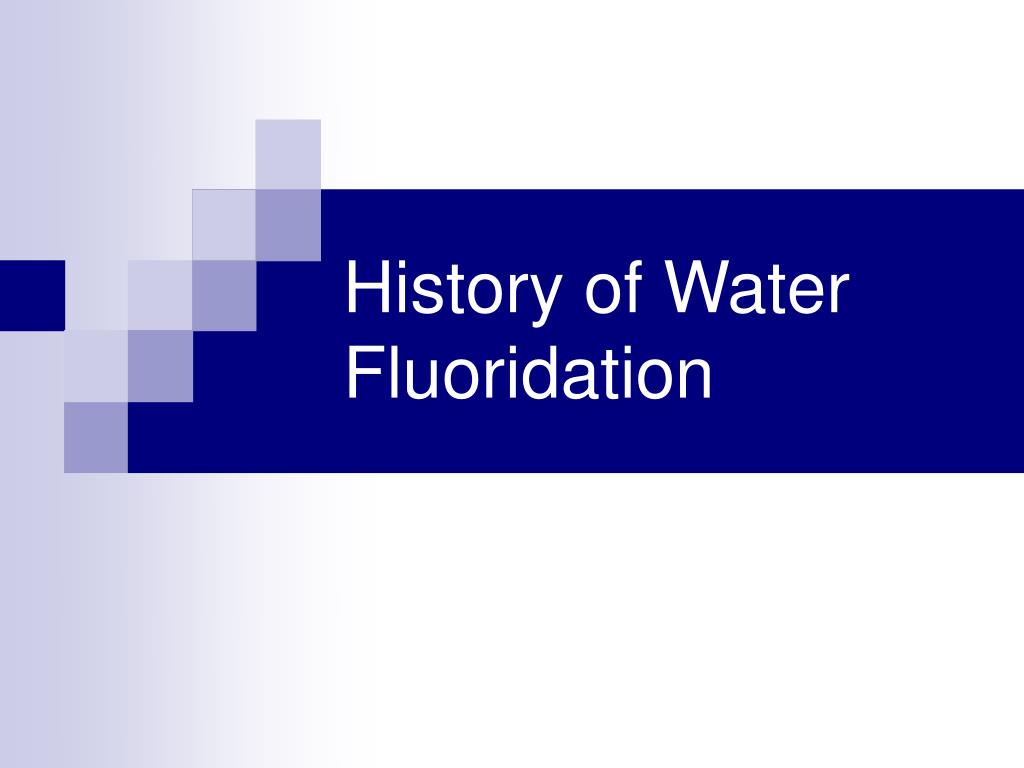
The success of this initiative in reducing tooth decay led to the widespread adoption of water fluoridation in many parts of the world. Today, it is recognized as a major factor in the dramatic decline in tooth decay seen in many developed countries over the past several decades.
The Benefits of Water Fluoridation
Water fluoridation has numerous benefits. It is a cost-effective method of reducing tooth decay across all age groups and socioeconomic classes. By strengthening tooth enamel and making it more resistant to acid attacks, fluoride can prevent the development of cavities and even reverse early stages of tooth decay.
Moreover, water fluoridation benefits everyone, regardless of age, socioeconomic status, or access to dental care. It is a passive form of prevention that does not require changes in behavior or access to dental services.
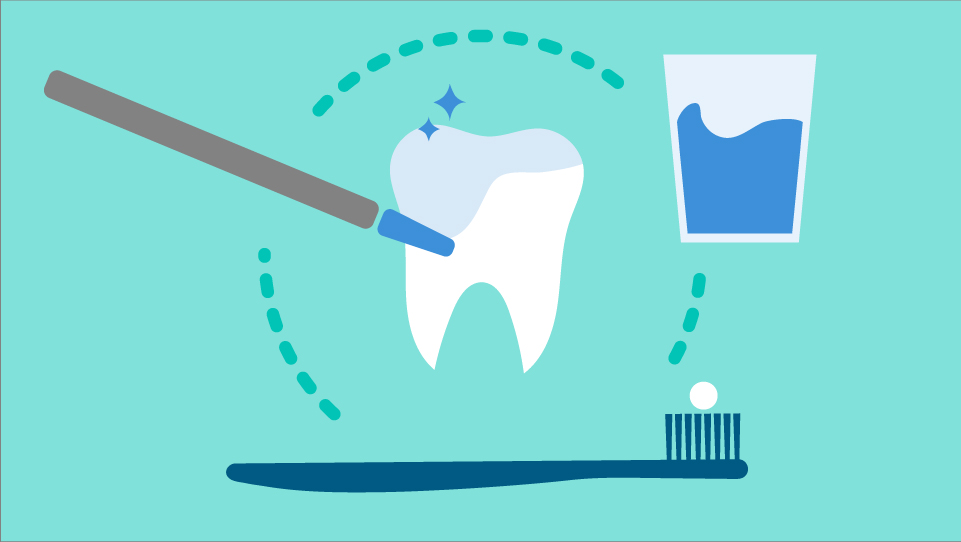
Countries that Practice Water Fluoridation
Water fluoridation is practiced in many countries around the world. In the United States, about 74% of the population served by public water systems receive fluoridated water. Other countries that practice water fluoridation include Australia, Brazil, Canada, Ireland, New Zealand, Spain, and the United Kingdom.
However, the practice varies greatly worldwide. Some countries have chosen other methods of fluoride delivery, such as salt or milk fluoridation, or rely on naturally occurring fluoride in their water supplies.
Health Implications of Fluoride in Water
The health implications of fluoride in water are generally positive, with the primary benefit being the prevention of tooth decay. However, it is important to maintain an optimal level of fluoride in water. Too much fluoride over a long period can lead to dental fluorosis, a condition that causes discoloration and pitting of the tooth enamel. In severe cases, skeletal fluorosis can occur, which can cause pain and damage to bones and joints.
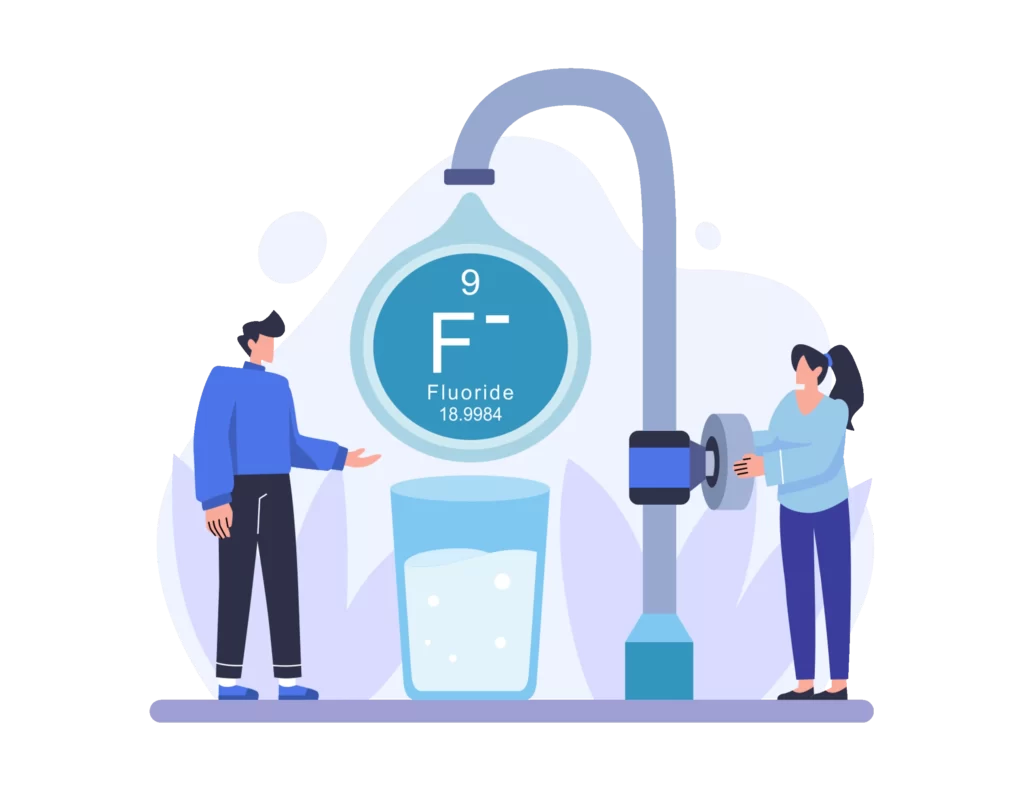
Despite these potential risks, the consensus among major health organizations, including the World Health Organization and the Centers for Disease Control and Prevention, is that water fluoridation is safe and effective at its recommended levels.
In conclusion, water fluoridation is a significant public health measure that has contributed to the reduction of tooth decay worldwide. While it is important to monitor fluoride levels to prevent overexposure, the benefits of water fluoridation in promoting dental health are well-documented and widely recognized.
Countries Practicing Water Fluoridation and Their Percentage of Population Receiving Fluoridated Water
| Country | Percentage of Population |
|---|---|
| United States | 74% |
| Australia | 80% |
| Canada | 45% |
| Ireland | 73% |
| New Zealand | 60% |
| Spain | 11% |
Fluoride in Drinking Water: A Double-Edged Sword?
Fluoride, a naturally occurring mineral, is known for its dental health benefits, particularly in preventing tooth decay. However, it’s not without its controversies and potential health risks. This article will delve into the positive and negative health impacts of fluoride, the controversy surrounding its use in drinking water, and the typical fluoride concentrations in our water supplies.
Positive Health Impacts: Dental Health
Fluoride’s most significant health benefit is its role in maintaining dental health. It strengthens tooth enamel, making it more resistant to acid attacks that can lead to tooth decay. It also helps to repair the early stages of tooth decay and can reduce the ability of plaque bacteria to produce acid, a primary cause of cavities.
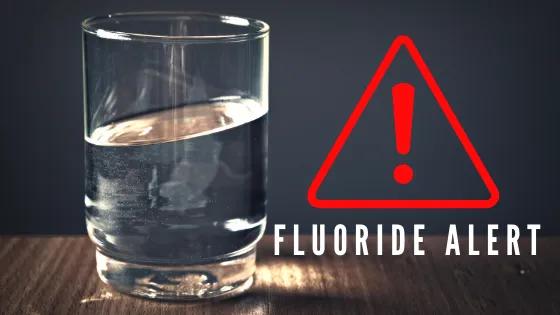
Water fluoridation, the process of adding fluoride to public water supplies, has been recognized by the Centers for Disease Control and Prevention as one of the top ten public health achievements of the 20th century. It is a cost-effective, equitable, and safe measure to prevent tooth decay in the population, regardless of age, socioeconomic status, or access to dental care.
Negative Health Impacts: Dental Fluorosis, Skeletal Fluorosis, and Other Potential Risks
Despite its benefits, excessive exposure to fluoride can lead to health issues. Dental fluorosis, a cosmetic condition resulting from excessive fluoride intake during tooth development, can cause white spots or streaks on the teeth. In severe cases, it can lead to brown stains or pitting of the tooth enamel.
Skeletal fluorosis, a more serious condition, can occur with long-term exposure to high levels of fluoride. It can cause pain and damage to bones and joints, and in severe cases, it can lead to changes in bone structure and calcification of ligaments.

There are also ongoing debates about other potential risks of excessive fluoride exposure, including neurodevelopmental issues and thyroid problems. However, these potential risks are generally associated with levels of fluoride exposure much higher than those recommended for water fluoridation.
The Controversy Surrounding Fluoride in Drinking Water
The addition of fluoride to drinking water has been a topic of controversy for decades. Critics argue that water fluoridation is a form of mass medication without consent, and they express concerns about potential health risks from long-term exposure to fluoride.
Proponents, on the other hand, point to the significant dental health benefits and the decades of scientific research supporting the safety and efficacy of water fluoridation at recommended levels. Major health organizations, including the World Health Organization and the American Dental Association, endorse water fluoridation as a safe and effective public health measure.
How Much Fluoride is in Our Water?
The optimal fluoride concentration in drinking water recommended by the U.S. Public Health Service is 0.7 milligrams per liter (mg/L) or parts per million (ppm). This level provides the best balance of protection against tooth decay while minimizing the risk of dental fluorosis.
However, the actual fluoride concentration can vary depending on the water source and whether or not the water is fluoridated. In the United States, about 74% of the population served by public water systems receive fluoridated water.
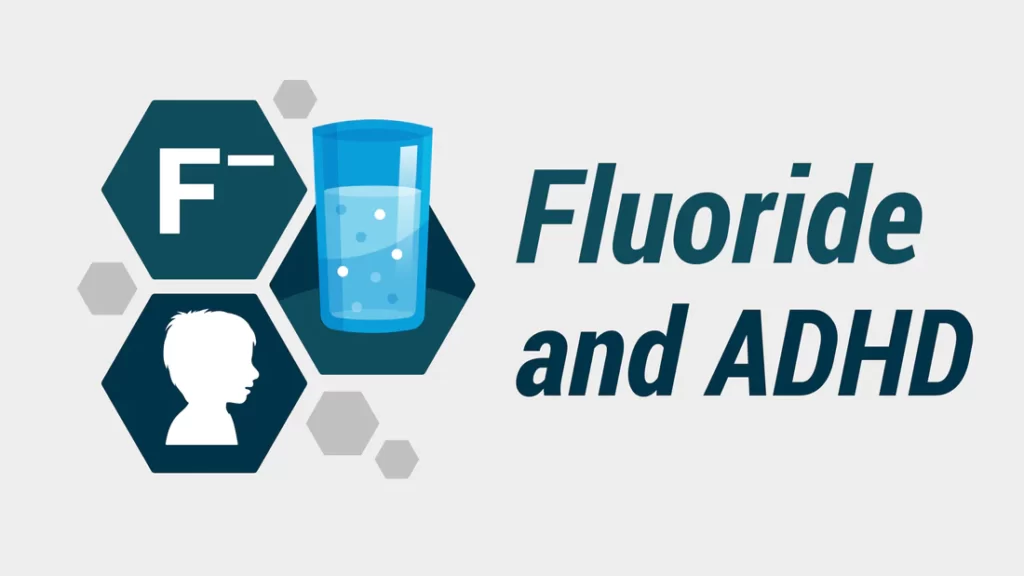
In conclusion, while fluoride in drinking water has proven dental health benefits, it is not without potential risks and controversies. It is essential to maintain an optimal level of fluoride in water to maximize its benefits and minimize potential harm.
Fluoride in Drinking Water: Levels, Testing, and Environmental Impact
Fluoride is a naturally occurring mineral that is added to many public water supplies to improve dental health. However, the levels of fluoride in drinking water need to be carefully controlled to maximize its benefits and minimize potential risks. This article will discuss the recommended levels of fluoride in drinking water, how to test for fluoride, regions with high fluoride levels, and the environmental impact of fluoride in water.
The Recommended Levels of Fluoride in Drinking Water
The optimal level of fluoride in drinking water is designed to provide the maximum dental health benefits while minimizing the risk of dental fluorosis. According to the U.S. Public Health Service, the recommended fluoride concentration in drinking water is 0.7 milligrams per liter (mg/L) or parts per million (ppm). This level is considered safe and effective for preventing tooth decay.
How to Test for Fluoride in Water
Testing for fluoride in water can be done using various methods, including ion-selective electrodes, colorimetric methods, and laboratory analysis. Home testing kits are also available, which provide a quick and easy way to check the fluoride levels in your drinking water. However, for a more accurate and comprehensive analysis, water samples should be sent to a certified laboratory.
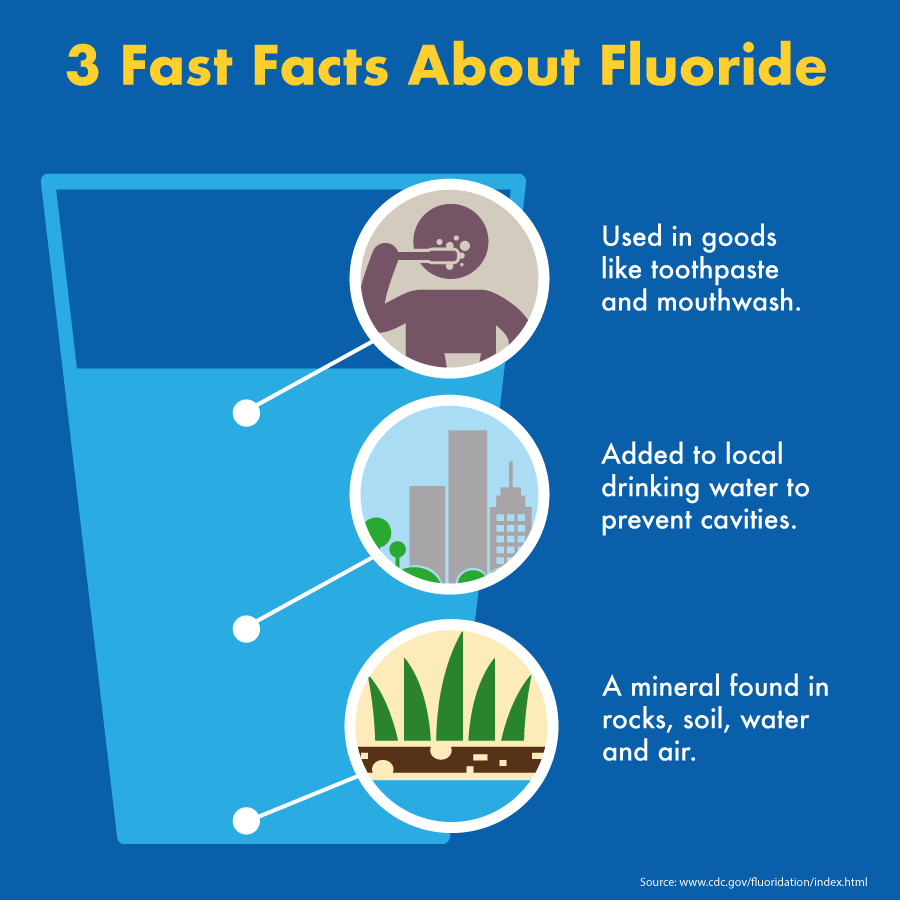
Regions with High Fluoride Levels in Water
Fluoride levels in water can vary greatly depending on the geographical area and the source of the water. Some regions naturally have high fluoride levels in their water due to the geological composition of the area. For example, parts of East Africa, India, and China have been known to have high levels of naturally occurring fluoride in their groundwater. In some cases, these levels can significantly exceed the recommended limit, leading to public health issues such as skeletal fluorosis.
How Can Fluoride in Water Affect the Environment?
While fluoride is a naturally occurring mineral, excessive levels can have environmental impacts. Aquatic life can be sensitive to high fluoride concentrations. In water bodies near industrial areas where fluoride is a by-product, high fluoride levels can affect the growth and reproduction of fish and other aquatic organisms.
Fluoride can also accumulate in soils, impacting plant health and potentially entering the food chain. However, these environmental impacts are typically localized and associated with industrial pollution or natural geological high fluoride areas.
In conclusion, while fluoride in drinking water has significant dental health benefits, it’s crucial to monitor and control its levels. High fluoride regions need particular attention to prevent health and environmental issues. As consumers, being aware of the fluoride levels in our drinking water is an important aspect of our overall health and wellbeing.
Fluoride in Water: Addition, Safety Measures, and Removal Methods
Fluoride is a mineral that is added to many public water supplies to improve dental health. The process of adding fluoride to water, known as water fluoridation, is a carefully controlled and monitored practice. This article will discuss the methods used to add fluoride to water, the types of fluoride used, safety measures in water fluoridation, and how fluoride can be removed from water.
The Process of Water Fluoridation
Water fluoridation involves adjusting the fluoride concentration in a public water supply to the level recommended for optimal dental health. The process begins at a water treatment plant, where a controlled amount of a fluoride compound is added to the water. The water is then thoroughly mixed to ensure the fluoride is evenly distributed before it is piped to homes and businesses.
Types of Fluoride Used in Water Fluoridation
Three types of fluoride compounds are commonly used in water fluoridation: sodium fluoride, fluorosilicic acid, and sodium fluorosilicate. Sodium fluoride was the first compound used for fluoridation, but now, fluorosilicic acid and sodium fluorosilicate, which are less expensive and easier to handle, are more commonly used.

All three compounds are thoroughly tested for purity and safety, and they all effectively provide fluoride ions, which are the active ingredient in water fluoridation.
Safety Measures in Water Fluoridation
Safety is a top priority in water fluoridation. The process is strictly regulated and monitored by various local, state, and federal agencies. Water treatment plants follow stringent procedures to ensure the correct amount of fluoride is added to the water.
Regular water sampling and testing are conducted to verify that the fluoride levels are within the recommended range. Additionally, the fluoride compounds used are subject to rigorous quality control measures to ensure their purity and safety.
How Can We Remove Fluoride from Water?
While fluoride in drinking water is safe for most people, some may wish to remove it due to personal preference or health concerns. There are several methods to remove fluoride from water, including activated alumina defluoridation filters, distillation, and reverse osmosis.
Activated alumina filters can effectively remove fluoride but require regular replacement of the filter media. Distillation involves boiling water and collecting the steam, which leaves behind many contaminants, including fluoride. Reverse osmosis forces water through a semi-permeable membrane that can filter out fluoride and other contaminants.

However, it’s important to note that these methods vary in their effectiveness, cost, and practicality for home use. Also, removing fluoride from your drinking water will eliminate its dental health benefits.
In conclusion, water fluoridation is a carefully controlled process that provides significant dental health benefits. While safety measures ensure the appropriate levels of fluoride in our water, those who wish to remove it have several options available.
Fluoride Removal from Water: An Overview of Methods, Effectiveness, and Pros & Cons
While fluoride in drinking water is recognized for its dental health benefits, some people may wish to remove it due to personal preference or health concerns. Various methods exist for fluoride removal, each with its own effectiveness and set of pros and cons. This article provides an overview of these methods.

Overview of Fluoride Removal Methods
There are several methods to remove fluoride from water, including activated alumina defluoridation filters, distillation, reverse osmosis, and bone char carbon. Each method works differently and has varying degrees of effectiveness.
- Activated Alumina Defluoridation Filters: These filters use activated alumina (aluminum oxide) to attract and hold onto fluoride ions in the water.
- Distillation: This process involves boiling water and collecting the steam, which leaves behind many contaminants, including fluoride.
- Reverse Osmosis: This method forces water through a semi-permeable membrane that can filter out fluoride and other contaminants.
- Bone Char Carbon: Bone char, a form of activated carbon made from animal bones, can adsorb fluoride ions from water.
Effectiveness of Different Fluoride Removal Methods
The effectiveness of fluoride removal methods can vary significantly:
- Activated Alumina Defluoridation Filters: These filters can remove up to 80-90% of fluoride, depending on the pH, temperature, and fluoride concentration of the water.
- Distillation: Distillation can effectively remove over 99% of fluoride, making it one of the most effective methods.
- Reverse Osmosis: Reverse osmosis can remove between 85-92% of fluoride, depending on the system and conditions.
- Bone Char Carbon: Bone char can remove up to 90% of fluoride, but its effectiveness can decrease over time and with use.
The Pros and Cons of Each Method
Each fluoride removal method has its own set of pros and cons:
- Activated Alumina Defluoridation Filters:
- Pros: Effective at removing fluoride; relatively affordable.
- Cons: The filter media needs to be replaced regularly; effectiveness decreases with use.
- Distillation:
- Pros: Highly effective at removing fluoride and other contaminants.
- Cons: Energy-intensive; removes beneficial minerals along with contaminants.
- Reverse Osmosis:
- Pros: Effective at removing a wide range of contaminants, including fluoride.
- Cons: Wastes a significant amount of water; removes beneficial minerals.
- Bone Char Carbon:
- Pros: Effective at removing fluoride; made from a renewable resource.
- Cons: Effectiveness decreases over time; not suitable for vegetarians or vegans due to its source.
In conclusion, while there are several methods to remove fluoride from water, each has its own effectiveness and set of pros and cons. It’s important to consider these factors when choosing a fluoride removal method that best suits your needs.
What is easy way to remove the fluoride from drinking water?
If you’re seeking an efficient method to eliminate fluoride from your drinking water, a Reverse Osmosis (RO) system could be the perfect solution. Not only does reverse osmosis effectively remove a wide range of contaminants, but it also eliminates between 85-92%* of fluoride content, making it an ideal choice for those looking to reduce fluoride intake.

Reverse osmosis operates by utilizing the pressure from your household water supply to propel tap water through a series of filters, including a semipermeable membrane and additional carbon or sediment filters. This filtration process is typically carried out in four stages, ensuring optimal water quality.
In essence, investing in a Reverse Osmosis system can provide a simple and effective method for fluoride removal from your drinking water, contributing to the overall health and wellbeing of your household.
Does the bottled water have fluoride?
When it comes to drinking water, many people turn to bottled water for its convenience, taste, or perceived purity. But is bottled water free from fluoride? The answer is not as straightforward as you might think. This article will delve into the presence of fluoride in bottled water, the regulations surrounding it, and what consumers need to know.
Fluoride in Bottled Water
Contrary to what many people believe, bottled water is not always free from fluoride. The fluoride content in bottled water can vary widely depending on the source of the water, the bottling process, and whether or not the manufacturer chooses to add fluoride.
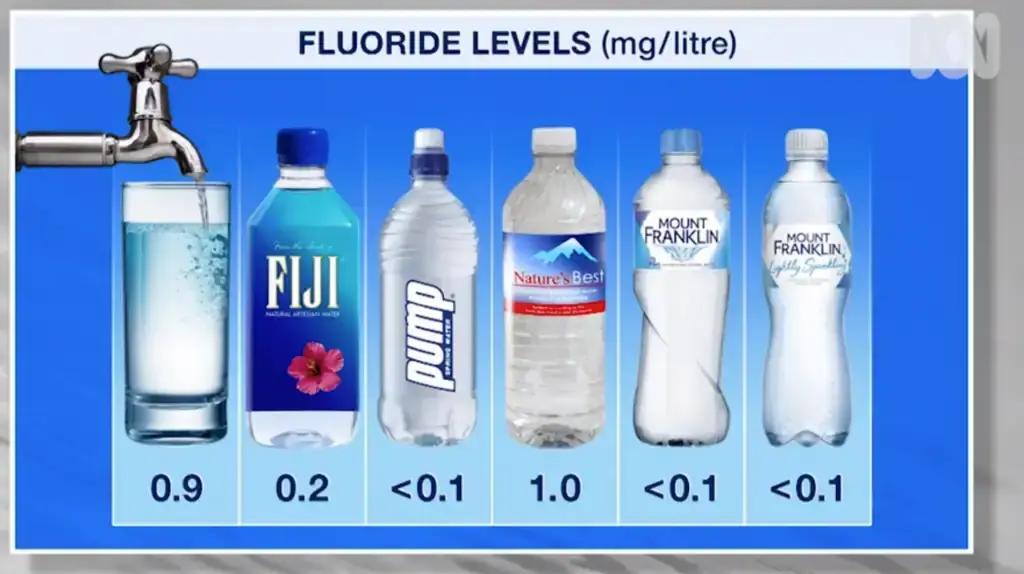
Some bottled waters are sourced from springs or groundwater that may naturally contain fluoride. Others may come from public water supplies that have been treated with fluoride. In some cases, bottled water manufacturers may even add fluoride to their products, often marketing these as fluoridated bottled water or bottled water for infants.
Regulations on Fluoride in Bottled Water
In the United States, the Food and Drug Administration (FDA) regulates bottled water and sets standards for its fluoride content. The FDA has established an allowable range for fluoride in bottled water, whether it is naturally occurring or added, from 0.6 to 1.7 milligrams per liter (mg/L) or parts per million (ppm). This range is designed to provide the dental health benefits of fluoride while minimizing the risk of dental fluorosis.
What Consumers Need to Know
For consumers who wish to avoid fluoride, it’s important to read the labels on bottled water. Bottled water labels often indicate the source of the water and any treatments it has undergone, including fluoridation. If the label does not provide this information, consumers can contact the manufacturer directly for more details.
For those who prefer bottled water with fluoride, look for products labeled as fluoridated or specifically designed for infants. These products are likely to contain fluoride at levels similar to fluoridated tap water.
In conclusion, while some bottled water may be free from fluoride, many products do contain this mineral, either naturally or added during the bottling process.
Water Fluoridation Around the World: A Global Perspective
Water fluoridation, the process of adding fluoride to public water supplies to prevent tooth decay, is practiced in many countries around the world. However, the approach to water fluoridation varies greatly from country to country, often reflecting differing public health policies, resources, and cultural attitudes. This article will explore countries that fluoridate their water and their reasons for doing so, countries that do not fluoridate their water and their reasons, and the global debate on water fluoridation.
Countries That Fluoridate Their Water and Their Reasons
Several countries have implemented water fluoridation programs as a public health measure to reduce tooth decay. These include the United States, Canada, Australia, Ireland, New Zealand, and parts of the United Kingdom.

These countries have chosen water fluoridation due to its cost-effectiveness, its ability to reach a large population, and the significant body of evidence supporting its safety and effectiveness in reducing tooth decay across all age groups. In the United States, for example, water fluoridation has been recognized as one of the top ten public health achievements of the 20th century.
Countries That Do Not Fluoridate Their Water and Their Reasons
Many countries, particularly in Europe, do not fluoridate their water. These include Austria, Belgium, Denmark, Finland, France, Germany, Netherlands, Norway, and Sweden.
The reasons for not fluoridating water vary. Some countries have high levels of naturally occurring fluoride in their water supplies, making additional fluoridation unnecessary. Others have chosen alternative methods of fluoride delivery, such as salt or milk fluoridation.
In some cases, the decision not to fluoridate water reflects philosophical or ethical concerns about mass medication, individual rights, and informed consent to medical intervention. For example, in the Netherlands, water fluoridation was discontinued in the 1970s due to concerns about individual rights and the lack of informed consent.
The Global Debate on Water Fluoridation
The global debate on water fluoridation often centers on the balance between the public health benefits of reducing tooth decay and the ethical considerations of mass medication and individual rights.
Proponents of water fluoridation argue that it is a cost-effective, equitable, and safe public health measure that has been proven to reduce tooth decay. They point to the endorsements of major health organizations, including the World Health Organization and the American Dental Association.
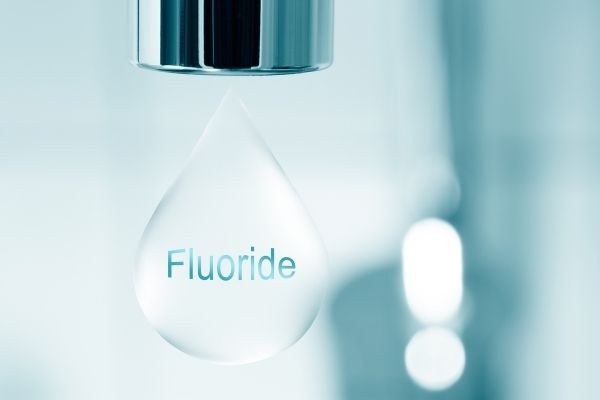
Critics, however, raise concerns about potential health risks from long-term exposure to fluoride, the ethics of mass medication without individual consent, and the lack of choice for those who do not wish to consume fluoridated water.
In conclusion, the practice of water fluoridation varies greatly around the world, reflecting a complex interplay of public health policies, resources, cultural attitudes, and ethical considerations. The global debate on water fluoridation continues, underscoring the need for ongoing research, dialogue, and thoughtful public health policy-making.
Hopefully, this article answered the question “What is fluoride?” Pureflowz can help you customize water purification solutions to meet the needs of different countries.
